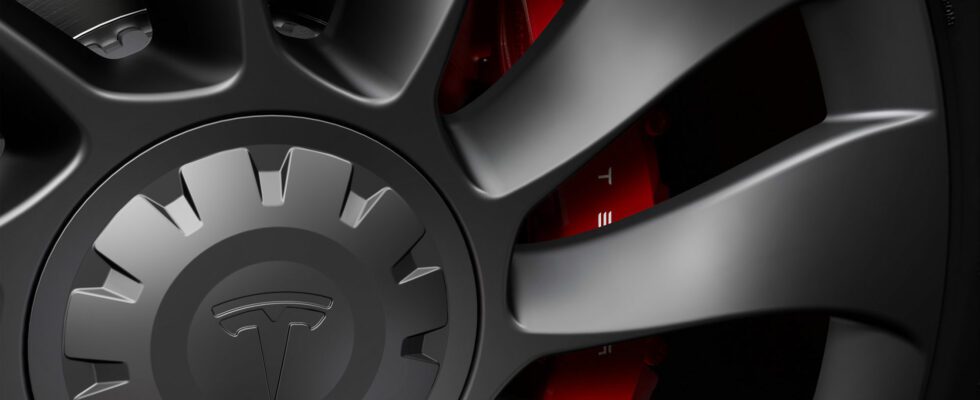Tesla Model Y Performance customers feel harmed by their braking system. It is for them nothing more than the system of the Long Autonomy model, with red covers.
A tweet has caused a strong reaction from owners of Tesla Model Y Performance, since January 8, 2023. Several users had already complained about the change in the braking system of their car, at the end of 2022, on specialized forums of the brand. But, with the tweet from ZEVcentricthis information is now spreading like wildfire.
At the heart of the dispute are the brakes of the Model Y Performance. They would finally have nothing more than the system installed on the Model Y Long Autonomy. Nevertheless, customers pay in this version for a “performance pack” with in particular “performance brakes”. A brake caliper simply painted red is clearly not enough to qualify it as a performance brake.
What’s in the Model Y Performance Pack?
For €5,000 more than the Long Autonomy version, Tesla Model Y Performance buyers have a more powerful model. In addition to unbridled performance, the Model Y Performance comes with mechanical and cosmetic changes (according to the Tesla site):
- Maximum speed: up to 250 km/h,
- 21″ Überturbine rims,
- performance brakes,
- Lowered suspensions,
- Aluminum crankset.
The commercial site does not even mention in the list of elements the carbon spoiler specific to the Performance versions.
Tesla has never really been very vocal about brake specifics on its retail site, allowing it to change features down the road without having to justify the change to customers. If you want to know more about the technical specifics, it is in the owner’s manual that you have to connect to find the information, normally updated with the latest changes.
Tesla changed supplier for part of the braking in the summer of 2022
From August 15, 2022, Tesla has changed the supplier for the rear brakes of its Model Y Performance coming off the assembly lines. The brand has changed from brakes from the well-known brand Brembo to brakes from the Mando brand.
Tesla, however, ensures that the performance remains unchanged between the two suppliers. If the performances remain the same, one can easily imagine that the reason for the change is of the order of cost optimization. Could it also be a question of cost that has Model Y Performance customers wondering if Tesla lied to them about the performance of the braking system, as revealed on Twitter?
The rear brakes seem identical to the Model Y Long Range
User ZEVcentric removed the wheels of his Model Y Performance and found that under a red cover for aesthetic purposes, the brake calipers seemed perfectly similar to those of the Model Y Long Autonomy. It is nevertheless useful to specify that the brakes on the rear wheels are secondary, it is the brakes on the front wheels that do most of the work.
By observing the front braking system, the user also arrives at the same conclusion, having the impression that he has paid more for red paint. Here is what he shared on Twitter: At some point Tesla decided to put caliper covers on the Model Y. What does this mean? Behind is a smaller brake caliper and also a smaller rotor, as on the Long Range models. So now you’re just paying for the same brakes, but in red. »
He then went so far as to compare with another older Model Y Performance: “ Old caliper, bigger rotor = more surface area = better braking power! »
On the Tesla Motor Club forum, we can also read this testimony: “ My 9/22 MYP is designed with Performance dummy brakes. It’s terribly bad. I really feel cheated. »
Without having access to the various Model Y Performance concerned, it is difficult to be able to certify today that the brakes are identical in all respects, apart from the red color specific to the Performance versions. These testimonies should therefore be taken with caution.
However, if this were to be confirmed, Tesla would probably have to explain itself to customers who could feel harmed by a braking system that is much less efficient than expected. This would most certainly be one too many missteps for some of the brand’s customers.
